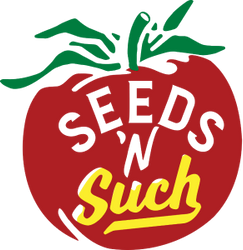
Foodscaping: 10 Plants to Fill Out Your Garden (and Your Fridge)
The prospect of growing food in your backyard can be pretty daunting. The raised beds. The need for more space. Trying to keep out pests. It’s easy to get overwhelmed before you even start.
But it doesn’t have to be so complicated. Foodscaping – the process of filling out an already-existing garden with edible plants – makes it easy to start growing your favorite vegetables without expanding the size of your garden or creating new beds. And once you’ve started incorporating plants like green beans and arugula into your collection, your new, more biodiverse garden will not only look gorgeous but will keep your fridge stocked.
So, what do you want to grow? While there are dozens of delicious foods to choose from, some vegetables can be easier to foodscape than others. If you’re new to foodscaping, here’s a list of vegetables that are great to start with.
Peppers
Spice up your garden while giving it a burst of color! Peppers are a go-to option for foodscapers looking for vegetables to grow in warm weather. Plus, their plant foliage can be poisonous for animals looking to graze, so you won’t have to worry about your hard work being ruined.
Kale
Nothing like being able to whip up a salad just by stepping out to the backyard. Incorporate a few kale plants into your new foodscape, and you won’t have to worry about animals digging into it either. Most animals tend to avoid it.
Tomatoes
If you have the space for them, tomatoes are another warm-season vegetable perfect for filling out a beautiful, ornamental garden with some edible plants. Just make sure your tomatoes are getting enough exposure to sunlight. It takes six to eight weeks for tomatoes to ripen from the time they’re planted.
Carrots
Looking for a vegetable to grow in your foodscape during the cold season? If you’re tight on space and looking for edibles that won’t take up too much room above ground, carrots might be a good option for you. Just make sure they’ve got soft soil to grow.
Lettuce
We’ve all got to start somewhere, and growing your own lettuce is an easy way to dip your toe into the world of foodscaping. You won’t need to create too much room in your garden, and it will blend in nicely with the landscape.
Green Beans
Green beans can be prepared in so many delicious ways, so it pays to have some ready in your garden when you need them. You can try pole beans or bush beans, depending on the space you have available and the aesthetic you’re going for. If you’re growing pole beans, you’ll need a trellis around which to scatter the seeds.
Garlic
Whether you live in a warm climate or cold one, you can grow garlic as long as you’re willing to be patient—garlic takes up to nine months to mature. If you’re in a colder climate, hardneck garlic is the best move. For warmer climates, try softneck garlic.
Arugula
This leafy green is perfect if you’re looking to plant in early spring or fall, and it will blend right in with your ornamental plants. Make sure your arugula has plenty of water and sunlight.
Onions
It’s pretty frustrating when you discover that critters have been feasting on the veggies you’ve worked so hard on, and onions are another edible that you can have peace of mind about growing. Animals tend to avoid them, and you’ll have homegrown onions for endless recipes!
Cucumber
If you’re looking for a relatively low-maintenance fruit to add to your garden, add cucumber to your growing foodscape. Plus, the payoff is quick! Cucumbers usually grow and ripen within around six weeks.
Again, this is just an introduction to a few easy options for getting your garden underway. Basil, potatoes and radishes are a few more simple edibles that’ll help get your garden where it needs to be as a source of food as well as a gorgeous part of your landscape. The best part of growing food in your own garden is that you can experiment however you want to!
